Patenticulars
A history of the modern wheelchair through patents
In the realm of mobility aids, the wheelchair has been around for centuries and stands as a testament to human ingenuity, compassion and the pursuit of inclusivity. Patents often serve as the blueprint for innovation and reveal the stories of inventors who dedicated their talents to crafting a more sustainable, inclusive world. To mark the International Day of the Wheelchair on 1 March, we take a look back at the origins and evolution of the modern wheelchair through the lens of patents.
-
Electric wheelchair by Elieson Chaimsonovitz Prosper in 1915
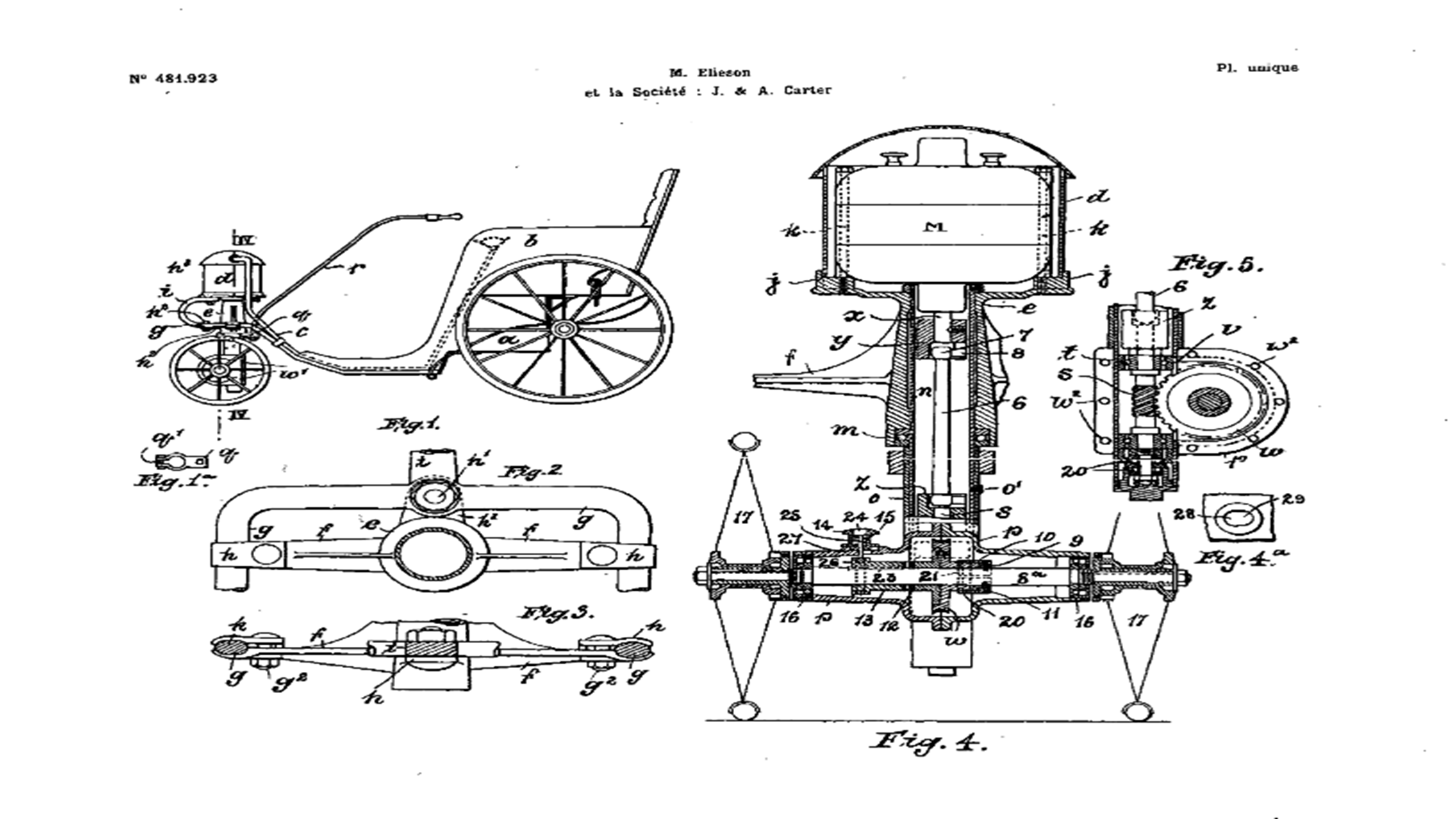 One of the first patents for the electric wheelchair, a design by inventor Elieson Chaimsonovitz Prosper, dates back to 1915. In its description, it is defined as an "… invention [that] relates to improvements to wheelchairs … with electric propulsion, and its main object is the means for supporting the electric motor and for transmitting the force of the motor to the axle of the wheel."
One of the first patents for the electric wheelchair, a design by inventor Elieson Chaimsonovitz Prosper, dates back to 1915. In its description, it is defined as an "… invention [that] relates to improvements to wheelchairs … with electric propulsion, and its main object is the means for supporting the electric motor and for transmitting the force of the motor to the axle of the wheel."
-
First folding wheelchair by Harry Jennings patented in 1936
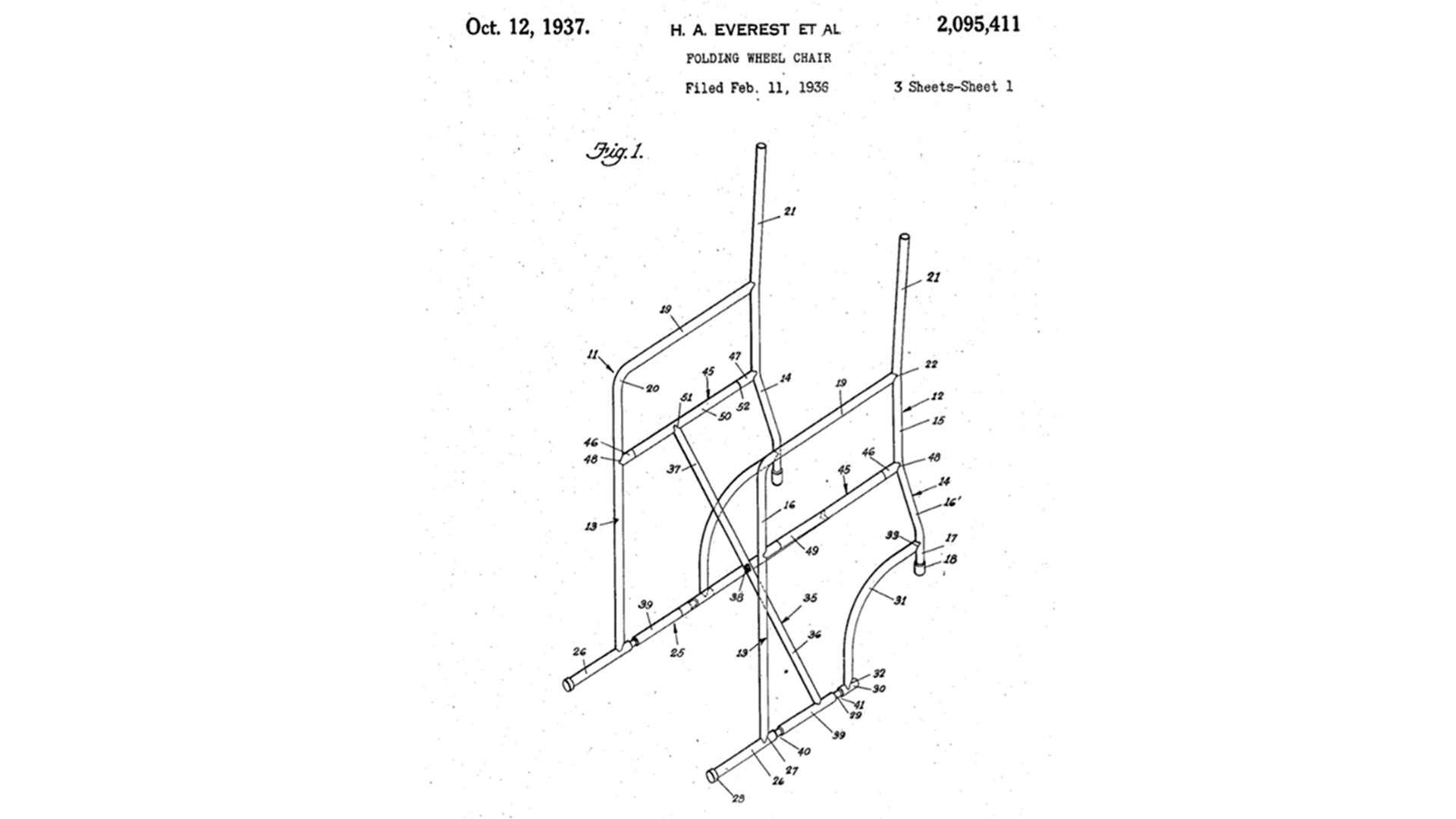
In 1936, engineer Harry Jennings invented the first folding wheelchair, which could be considered an evolution of this fully iron-constructed adjustable wheelchair from 1870. This groundbreaking wheelchair was crafted for Jennings' friend, Herbert Everest, who was paraplegic. Together, they established the company Everest & Jennings, which went on to enjoy prolonged success in the wheelchair market.
-
Motor-driven wheelchair by Homer Smith in 1938
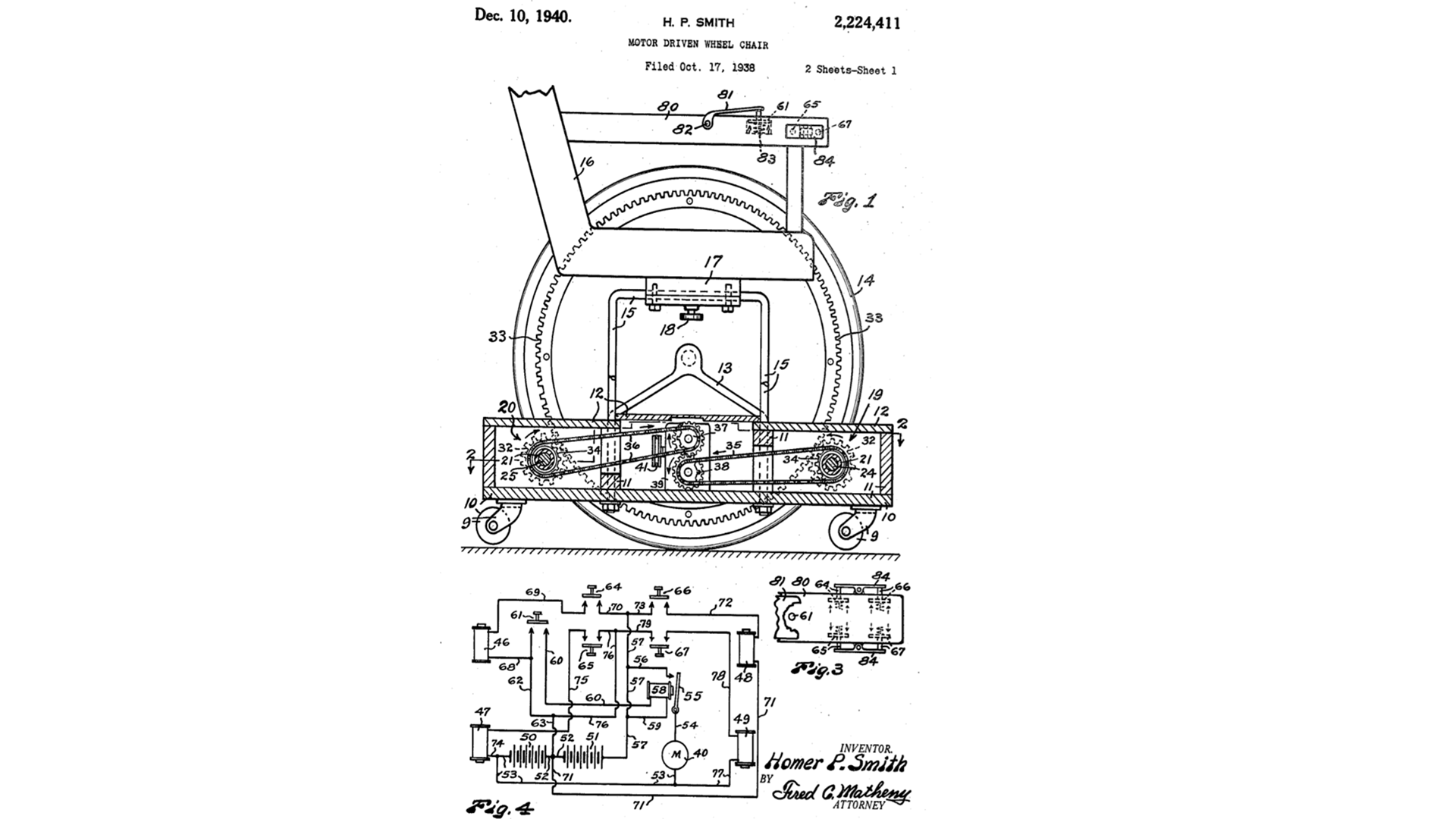
Another patent emerged in 1938 for a motor-driven wheelchair invented by Homer Smith in the United States. However, it is usually the Canadian inventor George Klein who is credited with having invented the first electric wheelchair as we know it today. His invention was intended for World War II veterans in the 1950s, and the design was then picked up and mass-produced by Everest & Jennings (see above).
-
Folding wheelchair by Patrick Williams in 1978
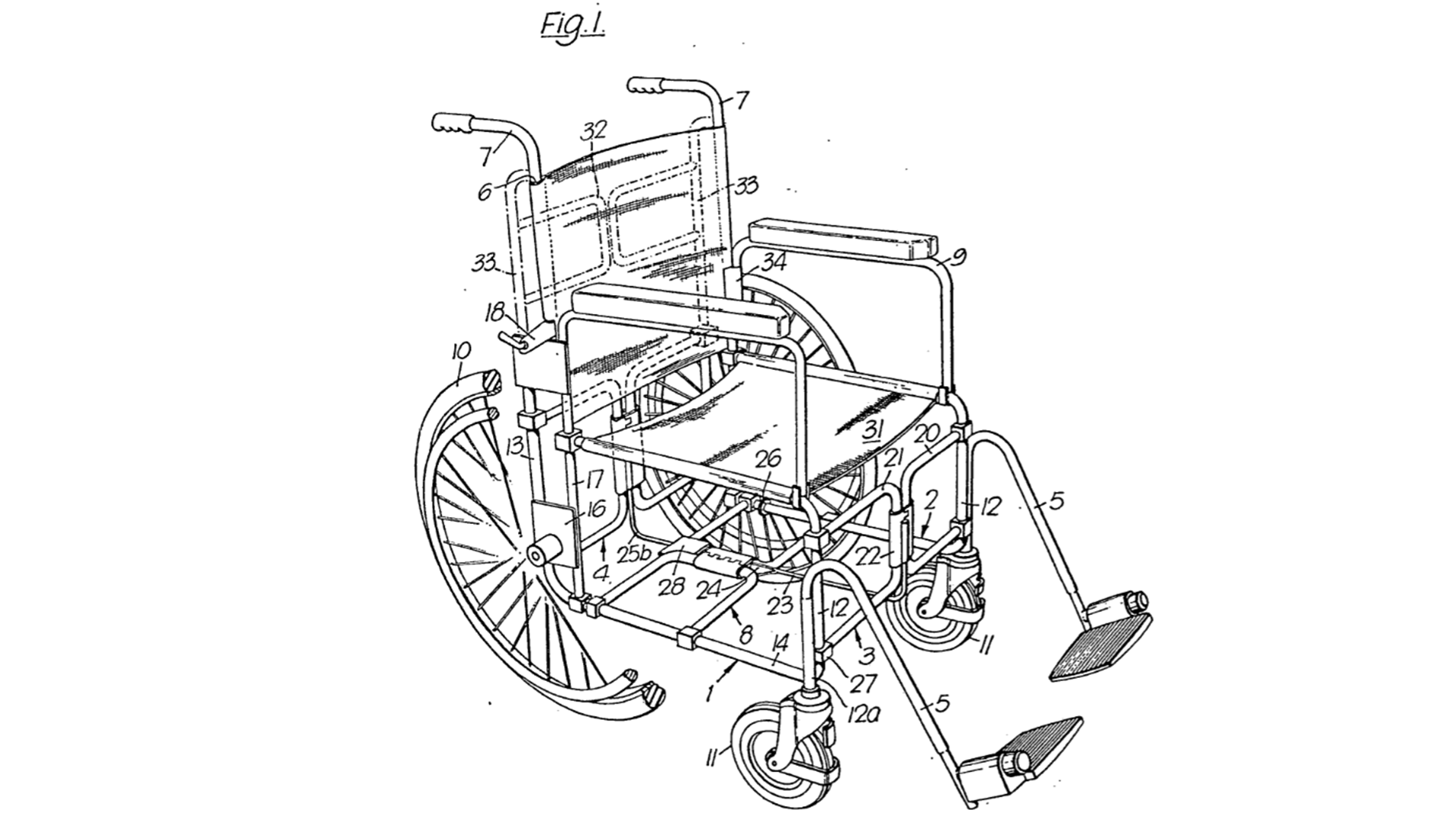
One of the first, if not the first, European patents for a wheelchair came in 1978 following in the footsteps of Harry Jennings' wheelchair (see above). According to its description, this folding wheelchair has a "side frame connected by front, rear and bottom toggle braces which in the folded position permit the side frames to come together." It additionally features an innovative folding footrest for the user.
-
Specialist control for a wheelchair by Munevo in 2017
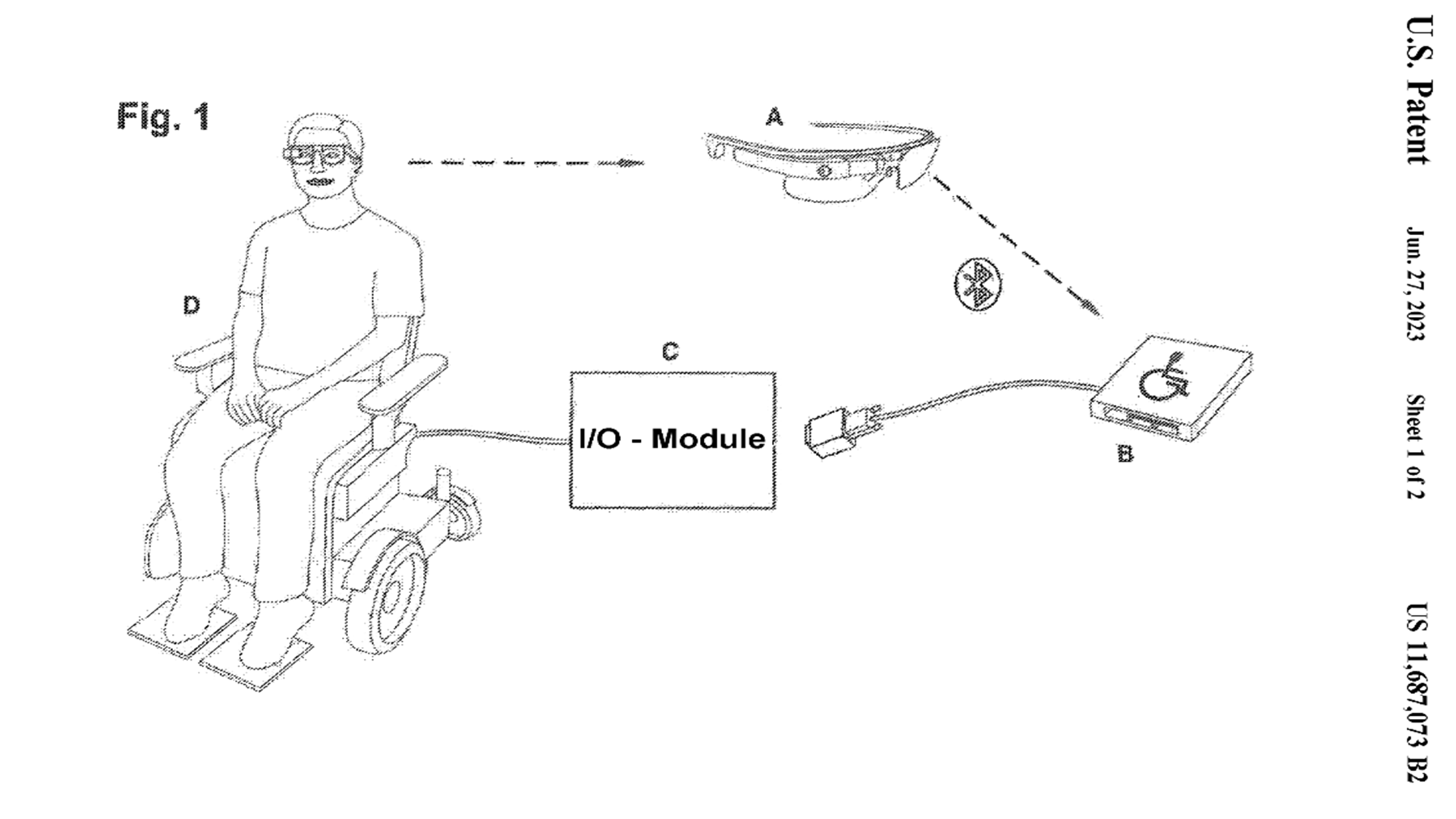
Finally, if we fast-forward to the 21st century, we can see the emergence of modern technologies being used in mobility aids. One example is this patent for specialist control for a wheelchair for people who cannot move their wheelchair using their own muscle power. The invention works with smart glasses that allow the user to make certain head movements or speech commands that guide the wheelchair accordingly.
Patents are a good starting point to understand the journey of the modern wheelchair and other mobility aids. European Inventor Award winner Elena Garcia Armada is certainly proof of how innovation through the decades can inspire current inventors to come up with new groundbreaking ideas. In this case, Garcia invented the world's first adaptable robotic exoskeleton for children who are wheelchair users and may experience muscle degradation or deformities of the spine as a result. For her invention, Garcia won the Popular Prize in 2022.
Through this journey, we hope to have brought attention to a device that has not only transformed the lives of millions, but also serves as a symbol of progress in accessibility and assistive technology. Let us continue to celebrate this wonderful invention not only today, but each and every day.
Keywords: D&I, wheelchair, inclusivity, people with disabilities












